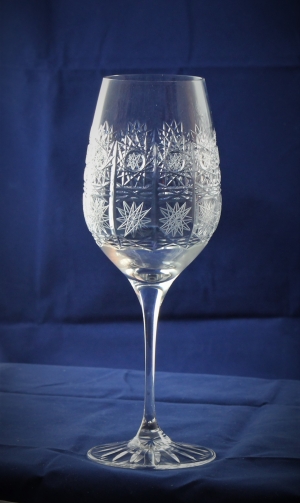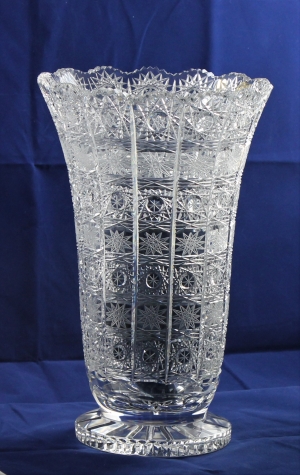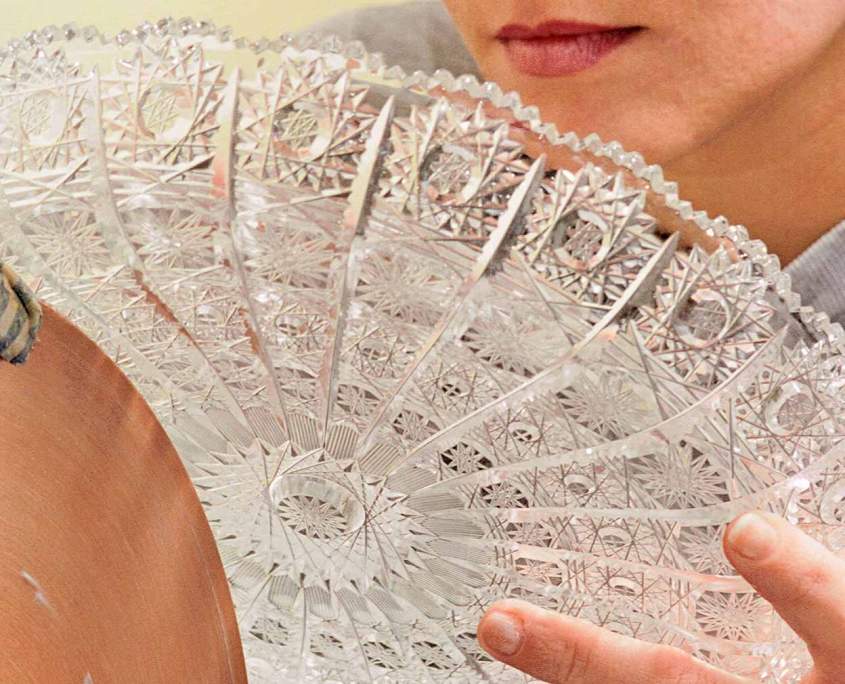What does Lead Crystal mean?
Lead Crystal – in contrast to silicate comodity glass, such as windows, bottles or drinking glasses – is a mix of quartzsand, potash and leadpigment (Pb3O4), and it is the synonym for sophistcated juwelry, decoration and glassware like rhinestones, chandeleers, drinking glasses, carafs.
Starting in the Middle Ages glass had been made in Bohemia
The invention of lead crystal cultivated this trade and more than 150 years ago the Bohemian School of Glass Processing was among the leaders in the world


























